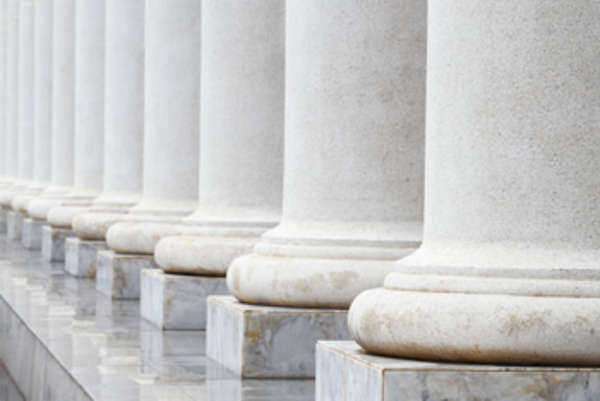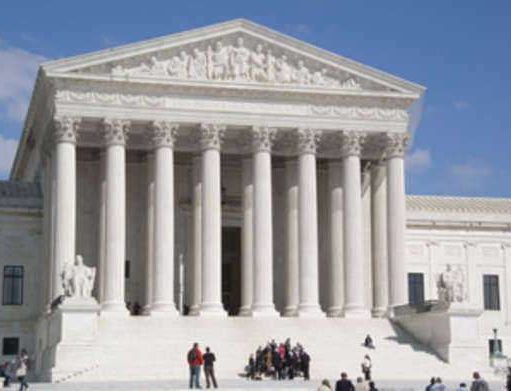Know The Nature and Role of The SC Justices

The Supreme Court of the United States is the highest court in the country, consisting of nine justices appointed by the President. The Court’s primary function is to hear appeals from lower courts and constitutional issues, and its rulings shape American law and society in significant ways. In this article, we will explore the role of the Supreme Court justices and provide information about each of the current members.
The Role of Supreme Court Justices
Supreme Court justices serve for life, and their primary role is to interpret the Constitution and federal law. They hear cases that have been appealed from lower courts, and they have the power to strike down laws that they believe are unconstitutional. Justices also play a crucial role in shaping American law through their legal opinions. These opinions serve as precedent for future cases and can influence national policy on important issues.
The Supreme Court’s decisions have far-reaching effects on American society. For example, cases such as Brown v. Board of Education, which struck down segregation in public schools, and Roe v. Wade, which legalized abortion nationwide, have had significant impacts on American law and politics. Therefore, the composition of the Supreme Court and the political leanings of its justices can have a significant impact on American law and society.
Current Members of the Supreme Court
The current members of the Supreme Court are Chief Justice John Roberts, and Associate Justices Clarence Thomas, Stephen Breyer, Samuel Alito, Sonia Sotomayor, Elena Kagan, Neil Gorsuch, Brett Kavanaugh, and Amy Coney Barrett. Each justice brings a unique perspective and background to the court, which can shape their legal opinions and influence the Court’s decisions.
Chief Justice John Roberts
Chief Justice John Roberts was born in Buffalo, New York, in 1955. He received his undergraduate degree from Harvard College and his law degree from Harvard Law School. Roberts worked in private practice before serving as an Assistant Attorney General under President Ronald Reagan. Later he was appointed to the United States Court of Appeals for the D.C. Circuit in 2003. In 2005, President George W. Bush nominated Roberts as Chief Justice of the United States, and he was confirmed later that year.
Roberts is generally considered a conservative on the Supreme Court, though he has been known to surprise observers with his expansive views of executive power and occasional swing votes. He has consistently voted against affirmative action and been sympathetic to business interests in cases concerning regulation and the environment, but voted to uphold the Affordable Care Act in 2012, where he wrote the majority opinion.
Justice Clarence Thomas
Justice Clarence Thomas was born in Pin Point, Georgia, in 1948. He received his undergraduate degree from Holy Cross College and his law degree from Yale University. Thomas worked in private practice before serving in the U.S. Department of Education, the Reagan Administration, and the U.S. Court of Appeals for the D.C. Circuit. In 1991, President George H.W. Bush nominated Thomas as an Associate Justice of the Supreme Court, and he was confirmed later that year.
Thomas is generally considered a strict conservative and an originalist. He advocates a limited view of the commerce clause and has consistently voted against affirmative action, voting rights, and other policies that consider race. Additionally, he is highly skeptical of the Court’s precedents in the abortion and the freedom of speech cases.
Justice Stephen Breyer
Justice Stephen Breyer was born in San Francisco, California, in 1938. He received his undergraduate degree from Stanford University and his law degree from Harvard Law School. Breyer worked in private practice before serving in the U.S. Senate Judiciary Committee and then the First Circuit Court of Appeals. In 1994, President Bill Clinton nominated Breyer as an Associate Justice of the Supreme Court, and he was confirmed later that year.
Breyer is considered a liberal on the Supreme Court and is a pragmatist in his approach. He has argued for a more flexible interpretation of the Constitution and considers the practical implications of the Court’s decisions. He has frequently voted in favor of individual rights and protections for parties in criminal and civil court cases.
Justice Samuel Alito
Justice Samuel Alito was born in Trenton, New Jersey, in 1950, and he received his undergraduate degree from Princeton University and his law degree from the Yale School of Law. Alito worked in private practice and then in the Department of Justice before serving for 15 years on the U.S. Court of Appeals for the Third Circuit. President George W. Bush nominated him as an Associate Justice of the Supreme Court in 2006, and he was confirmed later that year.
Alito is generally considered a conservative on the Supreme Court. He advocates for a narrow interpretation of federal power, and his opinions show skepticism toward affirmative action policies. Additionally, Alito has a strong interest in issues of corporate power and has supported a flexible interpretation of the First Amendment.
Justice Sonia Sotomayor
Justice Sonia Sotomayor was born in the Bronx, New York, in 1954. She received her undergraduate degree from Princeton University and her law degree from Yale Law School. Sotomayor worked as an assistant district attorney in New York City before being appointed to the U.S. District Court for the Southern District of New York in 1992 and later the U.S. Court of Appeals for the Second Circuit. In 2009, President Barack Obama nominated Sotomayor as an Associate Justice of the Supreme Court, and she was confirmed later that year.
Sotomayor is generally considered a liberal on the Supreme Court. She has written several influential opinions on issues of civil rights and has expressed a commitment to racial and socioeconomic diversity in the legal profession. She has frequently used her position to raise awareness regarding issues such as police brutality, discrimination, and immigration.
Justice Elena Kagan
Justice Elena Kagan was born in New York City in 1960. She received her undergraduate degree from Princeton University and her law degree from Harvard Law School. Kagan served as a White House counsel and as the Solicitor General before being nominated to the U.S. Court of Appeals for the District of Columbia Circuit. In 2010, President Barack Obama nominated Kagan as an Associate Justice of the Supreme Court, and she was confirmed later that year.
Kagan is generally considered a liberal on the Supreme Court, and she has been known for her sharp legal mind and pointed questioning during oral arguments. She has expressed a strong commitment to individual rights and has been vocal about issues of gender equality and reproductive rights. Additionally, Kagan has been known to search for pragmatic solutions to legal disputes while maintaining the balance with constitutional values.
Justice Neil Gorsuch
Justice Neil Gorsuch was born in Denver, Colorado, in 1967. He received his undergraduate degree from Columbia University and his law degree from Harvard Law School. Gorsuch worked in private practice before serving in the U.S. Department of Justice as an Assistant Attorney General. In 2006, President George W. Bush nominated Gorsuch to the U.S. Court of Appeals for the Tenth Circuit, where he served before being nominated to the Supreme Court by President Donald Trump in 2017.
Gorsuch is considered a conservative on the Supreme Court and believes in originalism. He has a strong commitment to a narrow interpretation of federal power and has frequently argued for the limited reach of federal law regarding social and economic issues. Gorsuch is also known to champion individual rights including defendant’s rights and strongly advocates privacy protections.
Justice Brett Kavanaugh
Justice Brett Kavanaugh was born in Washington D.C., in 1965. He received his undergraduate degree from Yale University and his law degree from Yale Law School. Kavanaugh worked as a clerk for several judges, including Anthony Kennedy, a former Supreme Court Justice whose seat he filled. Kavanaugh worked in private practice and later served in the U.S. Department of Justice under President George W. Bush. In 2018, President Donald Trump nominated Kavanaugh to the Supreme Court, and he was confirmed later that year.
Kavanaugh is a conservative on the Supreme Court and has shown he is an originalist who has advocated for a narrow interpretation of federal power. He was a strong advocate for expanding executive power during his time working in the George W. Bush administration. Kavanaugh’s opinions also reflect his opinions that courts should not vigorously scrutinize government actions.
Justice Amy Coney Barrett
Justice Amy Coney Barrett was born in Lafayette, Indiana, in 1972. She received her undergraduate degree from Rhodes College before attending Notre Dame Law School. Barrett worked in private practice before teaching law at Notre Dame and serving on the U.S. Court of Appeals for the Seventh Circuit. In 2020, President Donald Trump nominated Barrett to fill the vacancy created by the death of Justice Ruth Bader Ginsburg, and she was confirmed later that year.
Barrett is considered a conservative on the Supreme Court. Her legal opinions reflect originalist ideology, and she has consistently advocated for a narrow interpretation of federal power. Barrett has also been a strong advocate for religious freedom and has expressed a desire to protect religious liberties from government interference. Additionally, she has been skeptical of the stare decisis principle.
Conclusion
As the highest court in the land, the Supreme Court plays a pivotal role in shaping American law and society. The justices, who serve for life, bring their unique perspectives and ideologies to the Court, which can shape the Court’s decisions on important legal matters. As demonstrated by the current membership of the Supreme Court, the justices’ backgrounds and legal philosophies can range widely, which demonstrates the importance of continuing discussions on the nature and role of the judiciary in American society.
The nature and role of Supreme Court Justices are left quite open by the relevant section of the Constitution, Article III, on the issue of “Judicial Powers”, as well as a brief reference to the existence of the office of Chief Supreme Court Justice in Article I. The rules and procedures of this office were addressed most early on in the first Congressional legislation, the Judiciary Act of 1789.
This Bill fixed the number of Supreme Court Justices, the structure in which they would operate, and the responsibilities and powers which they would hold. Many of these rules would later be changed. In addition to formal legislative reform, the Supreme Court Justice role has also been changed and affected by the tasks taken on by specific members on the bench and by the requirements of the country as a whole.
The bench was originally comprised of six Supreme Court Justices, who were first officially convened on the first of February, 1790, in New York City. However, only by the next day would their full number assemble. At this point, Supreme Court Justices faced a substantial responsibility in addition to that of presiding over appellate courts, in the form of “circuit riding”, by which each Supreme Court Justice had the annual duty to personally preside over a pair of proceedings in each of the country’s districts. The Justices felt at this time that the obligation significantly and unnecessarily interfered with their main duties on the bench.
More general complaints were commonly aired by Supreme Court Justices in the institution’s first decade of existence as to the limited scope of the Court’s powers. This grievance began to subside with the beginning of the term of the fourth Chief Justice, John Marshall, in 1801. Under his tenure, the power of judicial review was first made available in practice to Supreme Court decisions, as established by his decision in the case of Marbury v. Madison.
The onerous circuit-riding requirement, however, was not removed until 1891. Another source for instability in the Court was the changing required numbers for Supreme Court Justices, which was eventually eased in 1869 with the decisive establishment of a nine-Justice membership.
Another important point for Supreme Court Justices in general of Marshall’s tenure as Chief Justice was the length of his term, which lasted for 34 years up until his death. As a supporting example of this principle, several of Marshall’s Associate Justices had terms lasting over twenty years.
According to Article III, a Supreme Court Justice can serve “during good behavior”. Without any stipulation for resignation, this is generally assumed to mean life. It is difficult and generally unlikely for a Supreme Court Justice to be removed from the bench, a procedure which can only be realized through Congressional impeachment and in practice has only been fully attempted once, toward Samuel Chase in 1805 with a conclusion of acquittal. In the early 21st Century, the average service of a Supreme Court Justice has been found to be 15 years.














